Andrew "Andy" Kolarik was an employee at the Algoma Plywood Company, a subsidiary of the U.S. Plywood Corporation, located in Algoma, Wisconsin. Andy played a significant role in developing the process for creating plywood shapes, including boat hulls. In 1949, the molded plywood process and its patents were acquired by the Wagemaker Company of Grand Rapids, Michigan. Andy was initially loaned to Wagemaker to assist with the establishment of U.S. Molded Shapes and was later appointed Plant Manager. His responsibilities extended beyond supervision, as he also designed boats, drawing on his studies in naval architecture through University of Wisconsin extension classes. Andy's office at U.S. Mold Shapes, positioned on a mezzanine, overlooked the factory floor through surrounding windows and featured a large drafting table for lofting boat designs. Lofting involved converting a design into a full-size plan to create construction patterns for the boat. Andy also invented various tools and devices to improve the manufacturing process, taking on multiple roles as manager, supervisor, designer, and engineer.
In February 1960, Ray Wagemaker sold U.S. Molded Shapes along with two other subsidiaries, Cadillac Marine & Boat Company and Empire Boat Company, to Schott Enterprises of Cincinnati, Ohio. In April 1960, a catastrophic destroyed the 42000-square-foot U.S. Molded Shapes, marking the second major fire in just over three years. The earlier fire, in February 1957, caused $750,000 in damages, primarily affecting completed hulls in the boatyard. Following the 1960 fire, salvageable equipment was relocated to Cadillac, where operations were consolidated with the Cadillac Boat Company. Andy continued with the company, assuming responsibility for designing and constructing fiberglass boats. However, the company encountered difficulties in the subsequent years.
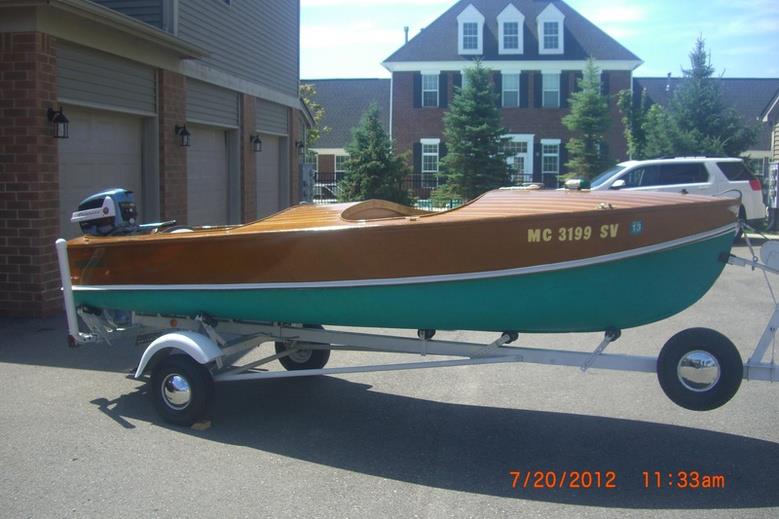
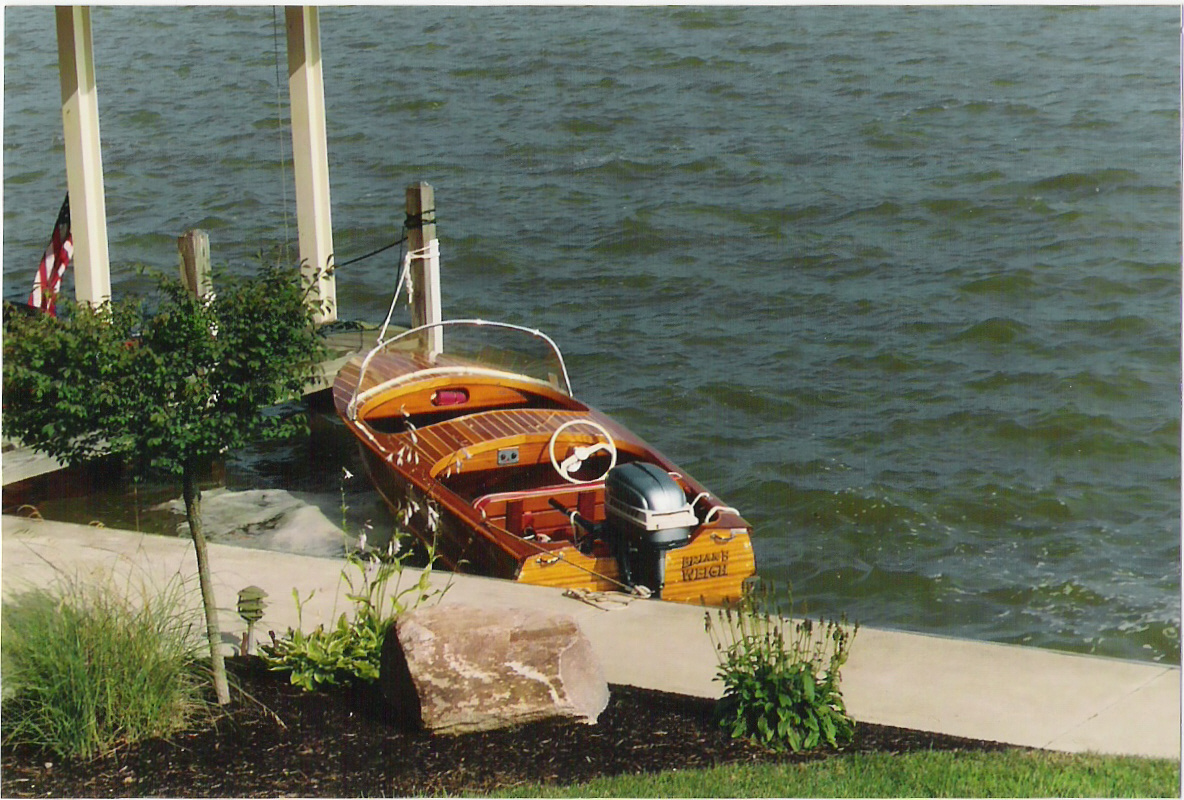

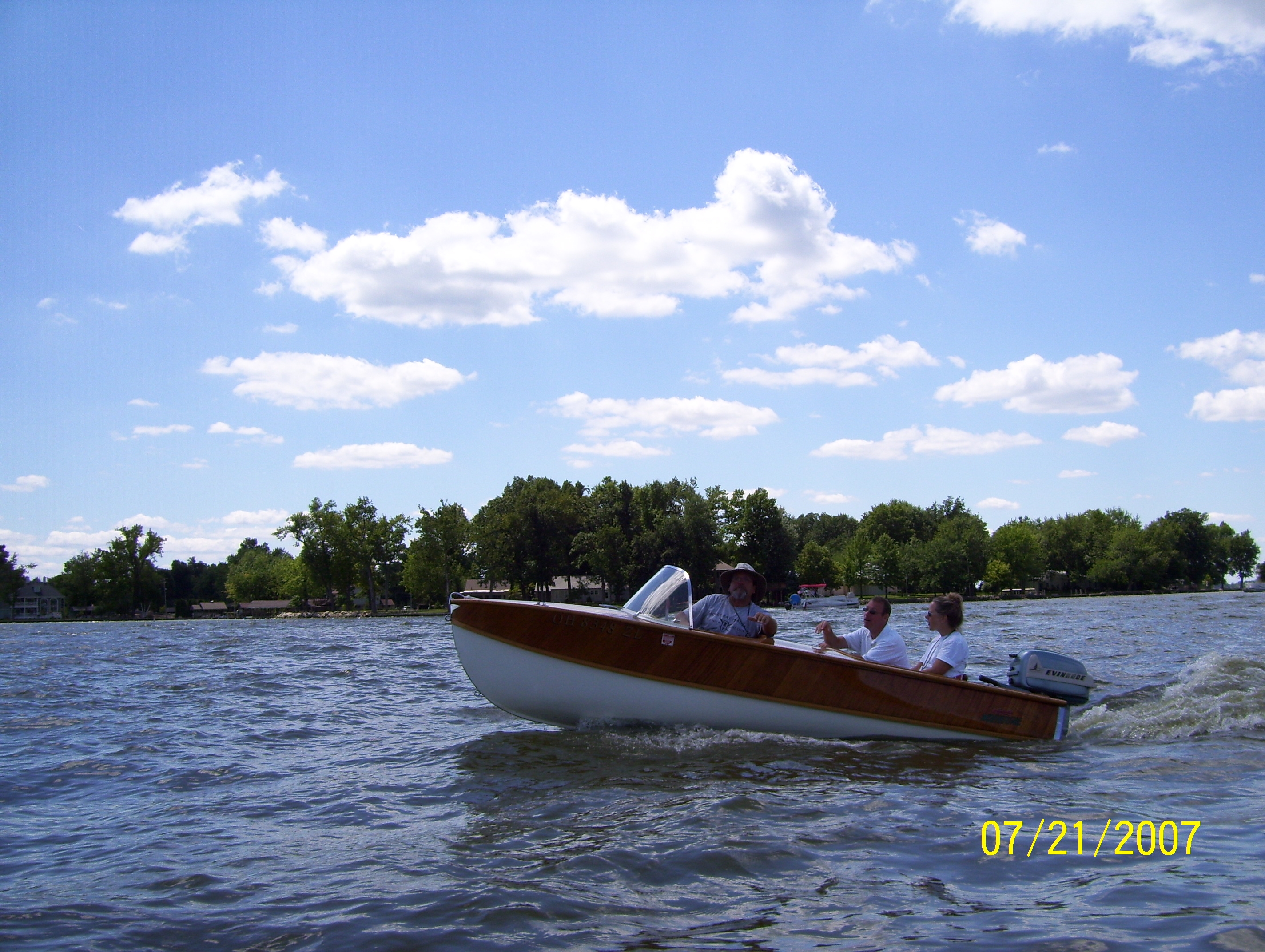
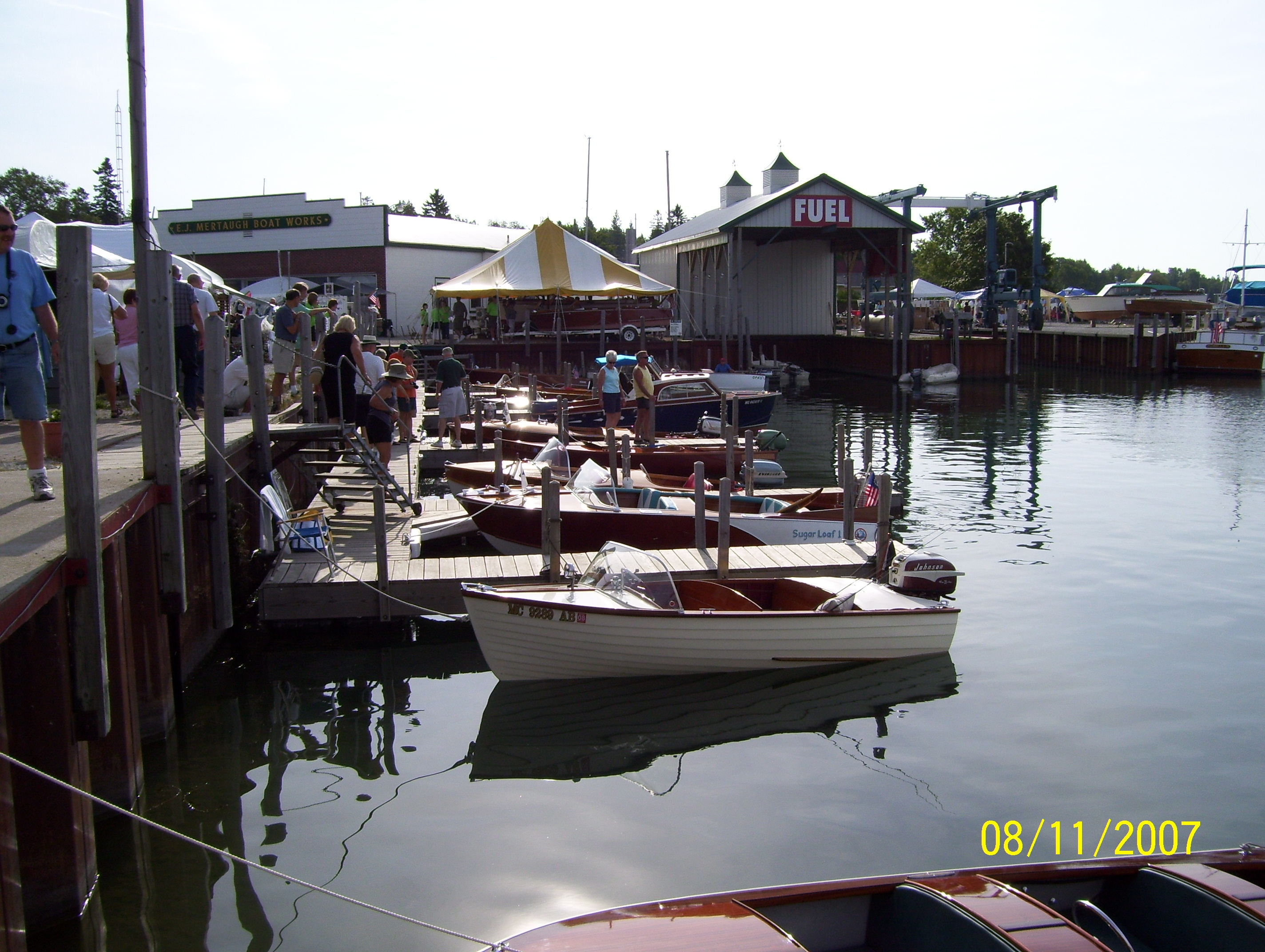
This is a hessel boat show on Aug 11, 2007 by Brian Fogarty below
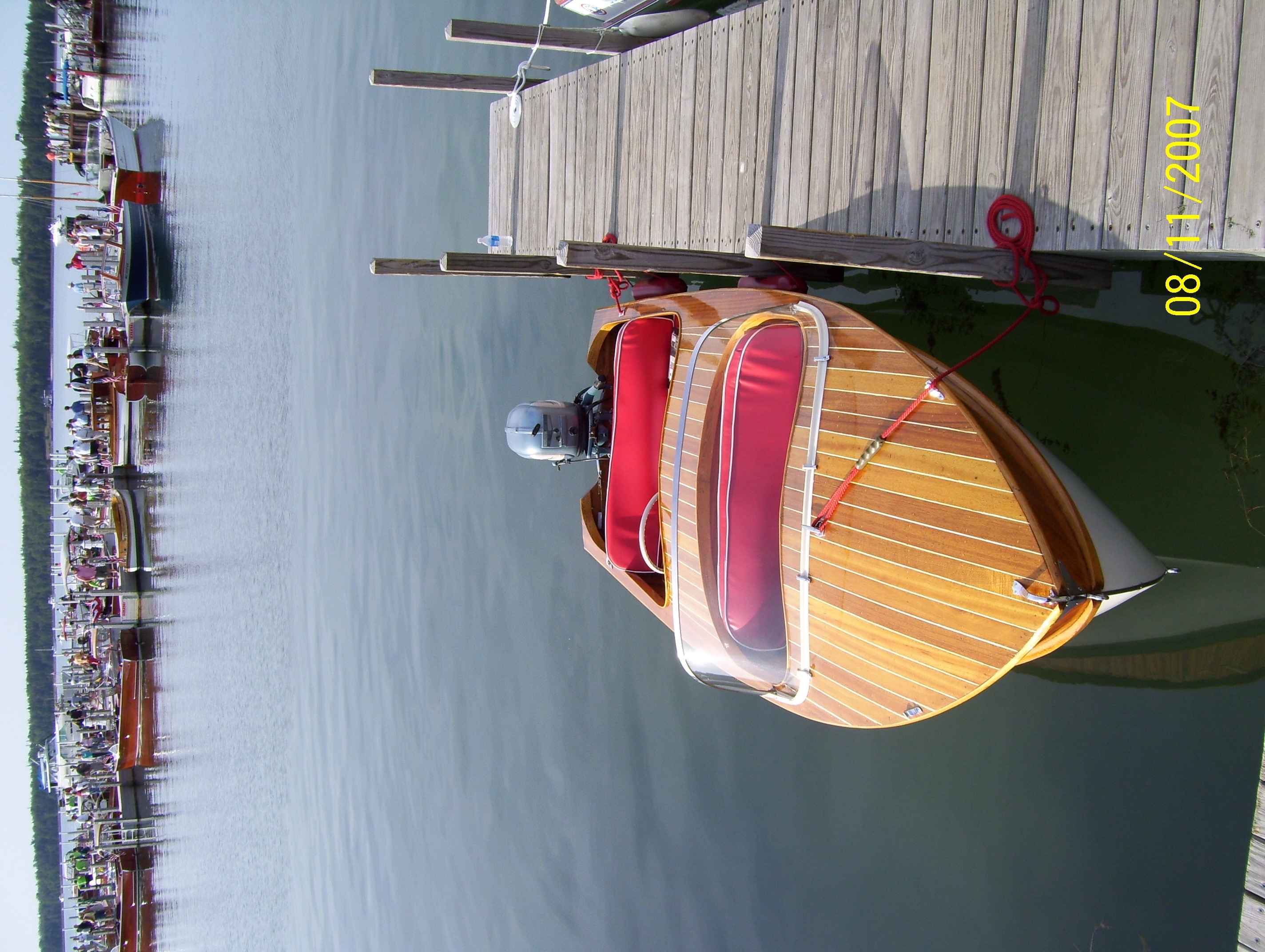

other picture of my 1955 Wagemaker boat on Indian Lake,Ohio by Brian Fogarty below
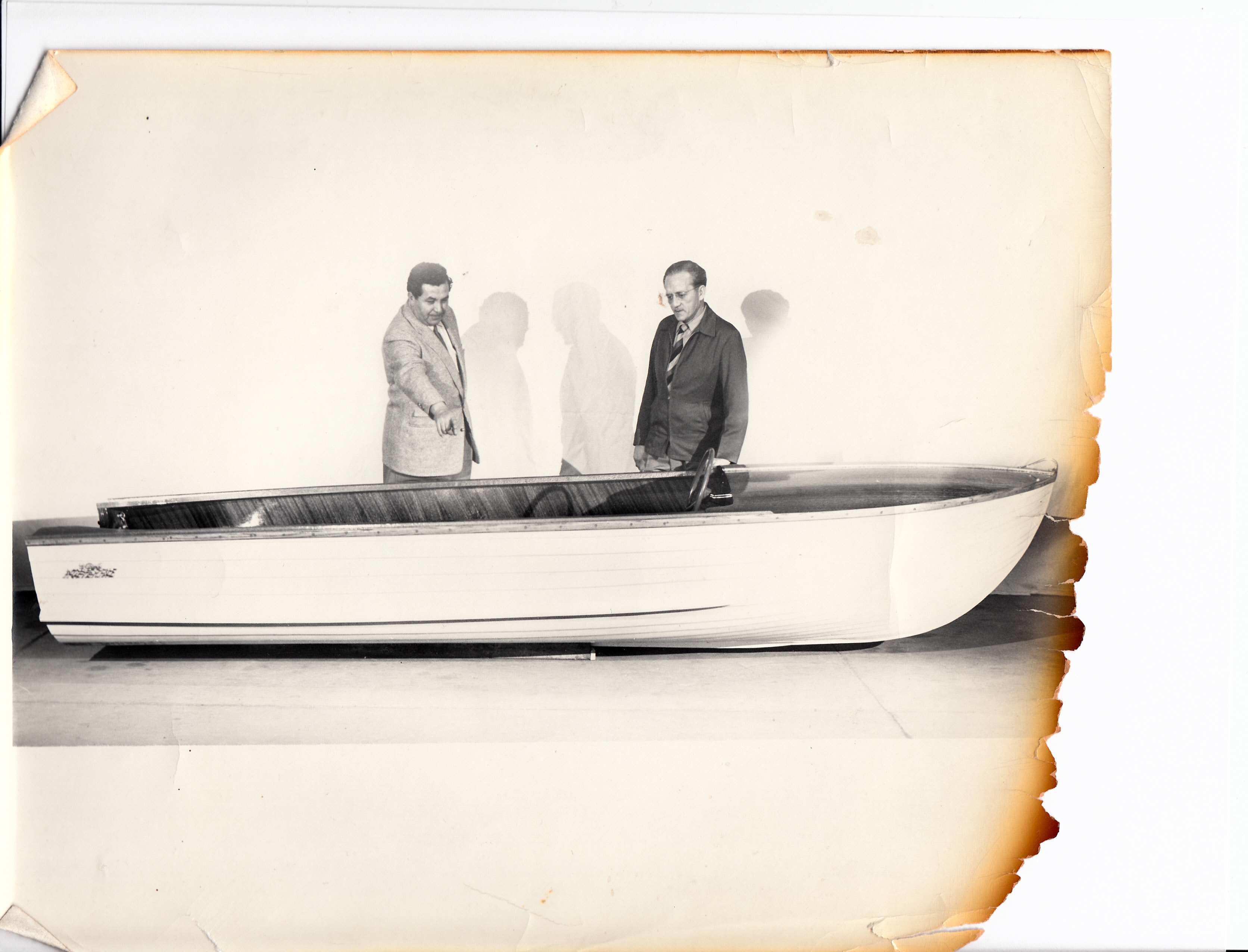
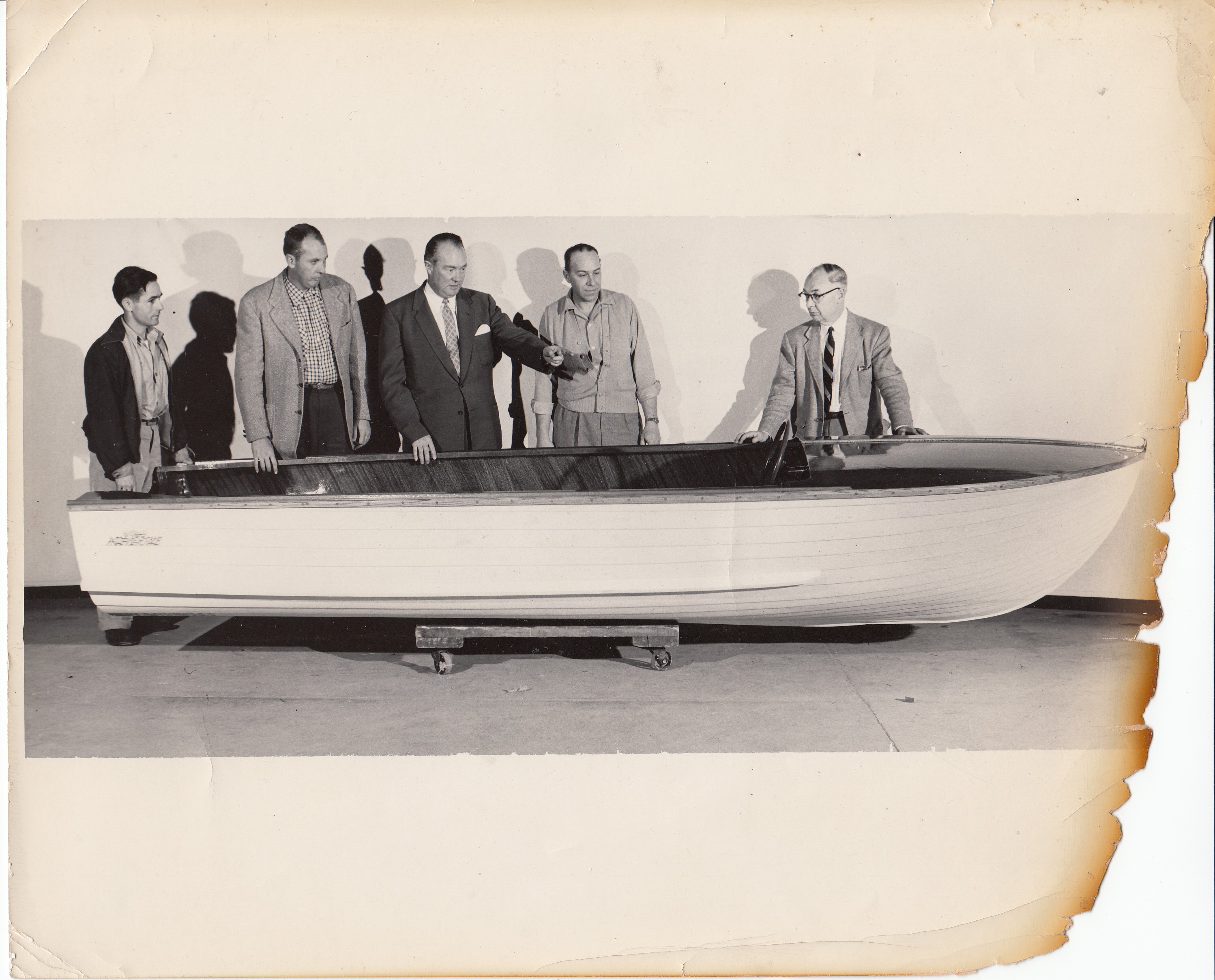
This is another photo retrieved form the 1960's fire. Shown are:
Left to Right;
Lee Mei, Michigan District Sales Manager. Lee also raced and tested boats.
Oliver J. Wagemaker, Vice President. Ollie was an accomplished skeet shooter who won may trophies.
Raymond O. Wagemaker, President
Hubert Ries, Forman of the finishing department. by Mike Kolarik below
Left to Right;
Lee Mei, Michigan District Sales Manager. Lee also raced and tested boats.
Oliver J. Wagemaker, Vice President. Ollie was an accomplished skeet shooter who won may trophies.
Raymond O. Wagemaker, President
Hubert Ries, Forman of the finishing department. by Mike Kolarik below
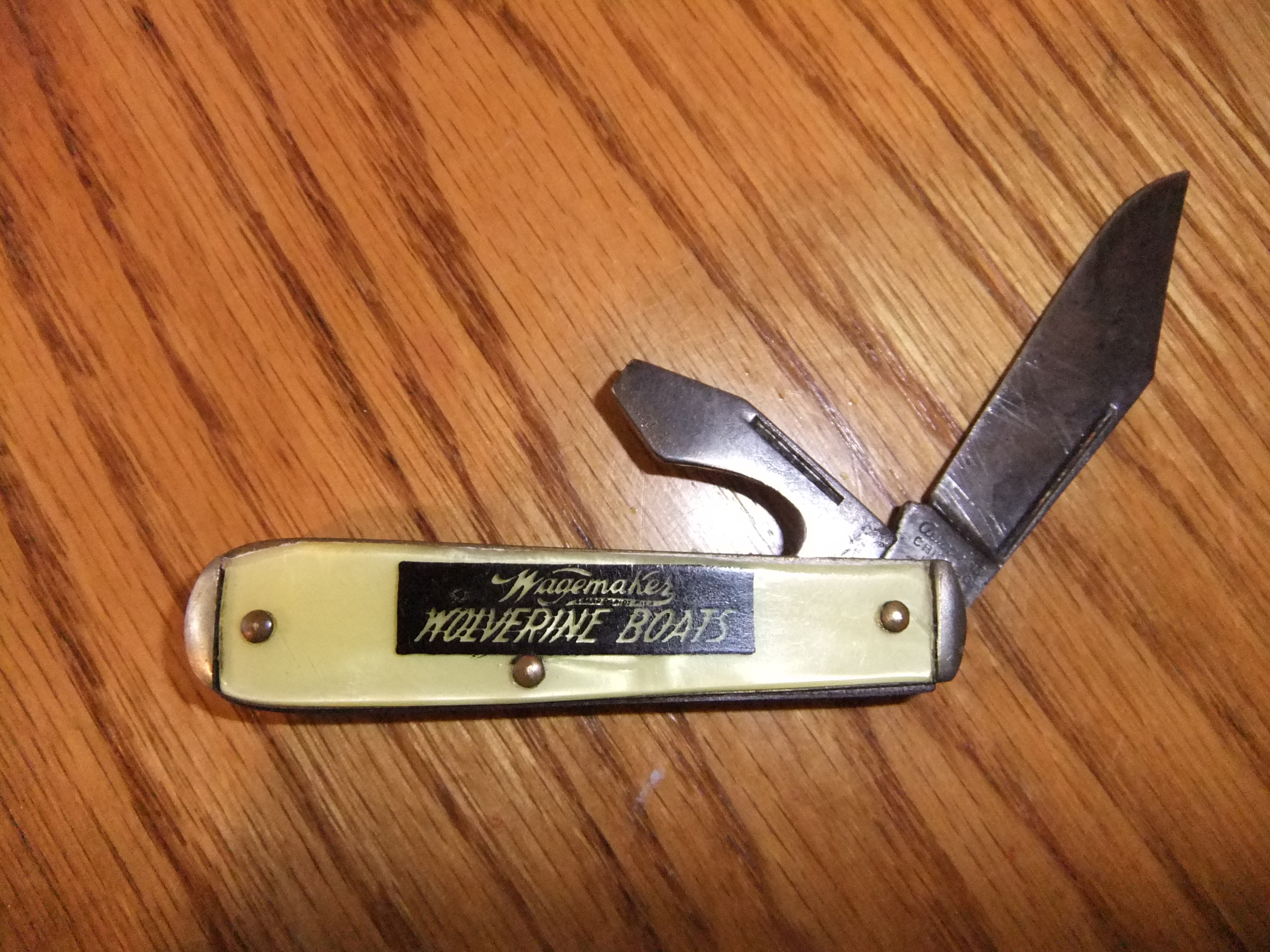
This is a picture of a jackknife which was a promotional in the '50s by Mike Kolarik below
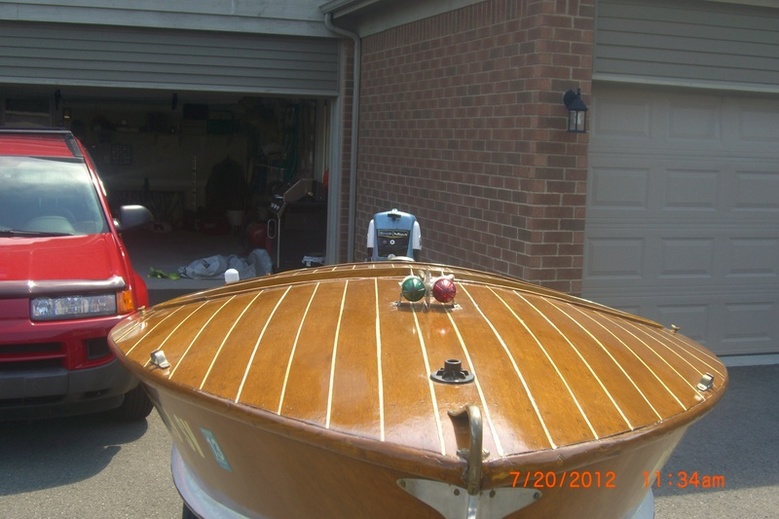


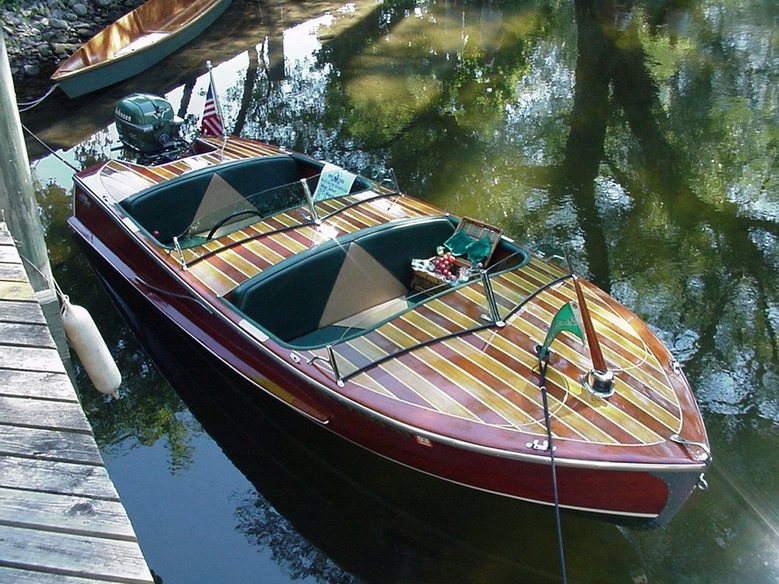
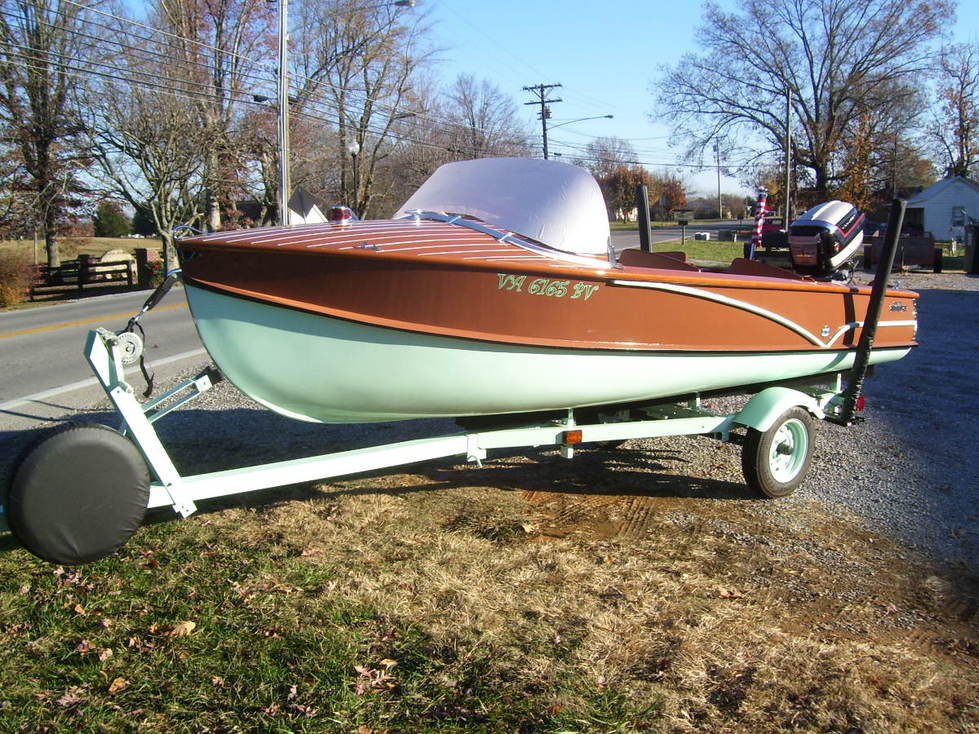

Doug Bosch take a pictures at Essex Boat Show, CT, July, 2011 by Doug Bosch below




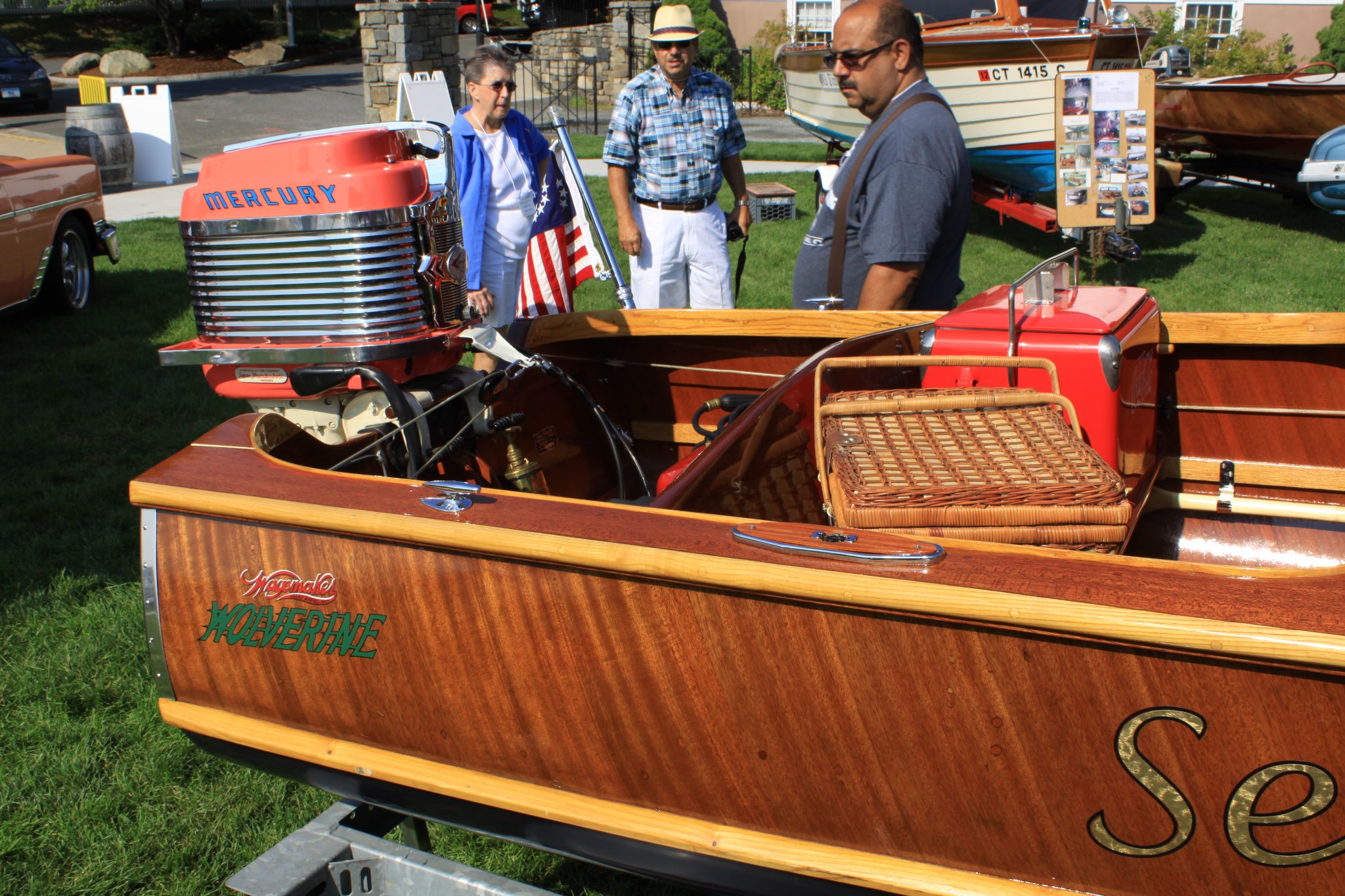
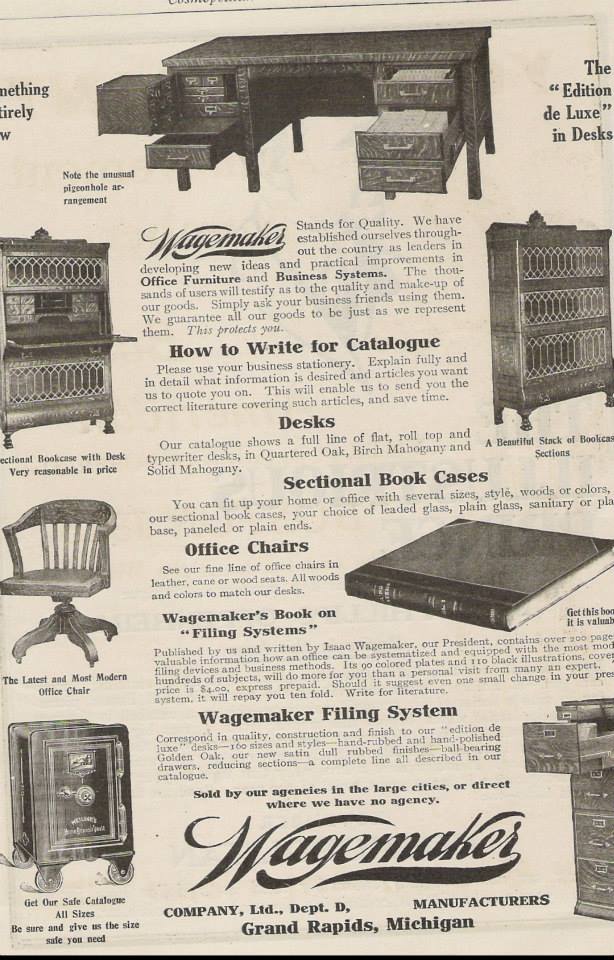
That boat is owned by Doug bosch
Thanks,
Brian Fogarty below
Thanks,
Brian Fogarty below
My Dad's 1955 Wagemaker Wolverine was brought into our family in 1967, including a 1957 35hp Evinrude Lark engine. By Erica below
This is a 1954 Wolverine with a 1957 evinrude fastwin
by Bob Desmarais below
by Bob Desmarais below
This is a great story by Garry Spencer below
My dad, Chap Spencer, was Evinrude district sales manager and made Less & Ray Wagemaker Evinrude dealers in 1934. At that time they were struggling to keep the company afloat. Dad was pulling an Evinrude trailer which had the full line of Evinrude and Elto motors in it. He was impressed by the Wagemaker brothers and sold them three motors out of the trailer. It was friday night and he had reservations about accepting the check so instead of sending it in to Milwaukee with there order he decided to check with the bank when they opened monday morning. He had deceided that if there wasn’t enough money to cover the check, he would cover it himself. As he was waiting in line for the bank to open, he was tapped on the shoulder. It was Ray with the money to cover the check. Less and Ray had gone out saturday and sold all three motors to raise the cash. Dad sold them three more motors off the trailer on credit. Dad stressed advertising as a way to expand the company. It was the start of a long friendship. We more or less became Wolverine dealers.
https://www.walagata.com/w/chapsboy/Family-Album/48-Muskie.jpg
After WW2 neighborhood racing came back. The under rated Mercuries were making a name for themselves in beating motors with a higher certified horse power rating. Dad’s interest in outboards started in racing. He regularly beat the factory racing teams and was hired by Ole Evinrude in 1928 to work in Elto’s Experimental Engineering department. Elto was merged with Evinrude and Lockwood in 1929 and dad found himself working as an assistant to Finn T. (Irgie) Irgens from Lockwood Motors. Irgie was a believer that a lot of super deluxe features made a better outboard that people would be eager to have at a higher price. Dad felt the more you added, the more that could go wrong. Don’t get me wrong, Irgie had a lot of great ideas. Dad just got frustrated spending so much time figuring economical ways to make his great ideas work.
My dad, Chap Spencer, was Evinrude district sales manager and made Less & Ray Wagemaker Evinrude dealers in 1934. At that time they were struggling to keep the company afloat. Dad was pulling an Evinrude trailer which had the full line of Evinrude and Elto motors in it. He was impressed by the Wagemaker brothers and sold them three motors out of the trailer. It was friday night and he had reservations about accepting the check so instead of sending it in to Milwaukee with there order he decided to check with the bank when they opened monday morning. He had deceided that if there wasn’t enough money to cover the check, he would cover it himself. As he was waiting in line for the bank to open, he was tapped on the shoulder. It was Ray with the money to cover the check. Less and Ray had gone out saturday and sold all three motors to raise the cash. Dad sold them three more motors off the trailer on credit. Dad stressed advertising as a way to expand the company. It was the start of a long friendship. We more or less became Wolverine dealers.
Dad bought property on Houghton Lake in Michigan and we build a log cabin there. A Wolverine was our first boat. It spent the first couple winters hung from the rafters of our front porch. Then we had a 2-½ car log garage built, it quickly held three Wolverines and half a dozen outboards. Ray asked dad if he would buy an interest in his boat company as he wanted to build a bigger factory. Dad explained that would be a conflict of interests with his work at Evinrude. He told Ray he should get a bank loan. Ray said the bank had already turned him down. Dad replied he obviously didn’t ask the right way. Putting on his ‘MBA’ hat he quickly typed out a prospectus for Ray to give to the bank manager. The loan was granted. The new Plant allowed for doubling production, but also needed a bigger workforce. Ray expressed concerns about meeting the bank payment after the summer business boom. Dad asked if ray had gotten the color brochures he had recommended. Ray had and dad took a box of them.
https://www.walagata.com/w/chapsboy/Family-Album/173001553139.Jpeg
At that time dad was covering the lower peninsula of Michigan, all of Indiana, Ohio, western Pennsylvania, and northern Kentucky. As he visited his Evinrude Elto dealers in those states he talked up Ray’s Wolverine boats and passed out the Wagemaker Wolverine Brochures. As a result he signed up over 500 new Wagemaker Wolverine dealers, each making deposits on two or three boats. Ray stopped worrying, he paid off the loan that year. 1940 was also the year we got a Wolverine Snipe sailboat as a Christmas present from Less and Ray. This brought the number of watercraft in the garage to six.
https://www.walagata.com/w/chapsboy/Family-Album/173001553139.Jpeg
At that time dad was covering the lower peninsula of Michigan, all of Indiana, Ohio, western Pennsylvania, and northern Kentucky. As he visited his Evinrude Elto dealers in those states he talked up Ray’s Wolverine boats and passed out the Wagemaker Wolverine Brochures. As a result he signed up over 500 new Wagemaker Wolverine dealers, each making deposits on two or three boats. Ray stopped worrying, he paid off the loan that year. 1940 was also the year we got a Wolverine Snipe sailboat as a Christmas present from Less and Ray. This brought the number of watercraft in the garage to six.
https://www.walagata.com/w/chapsboy/Family-Album/48-Muskie.jpg
After WW2 neighborhood racing came back. The under rated Mercuries were making a name for themselves in beating motors with a higher certified horse power rating. Dad’s interest in outboards started in racing. He regularly beat the factory racing teams and was hired by Ole Evinrude in 1928 to work in Elto’s Experimental Engineering department. Elto was merged with Evinrude and Lockwood in 1929 and dad found himself working as an assistant to Finn T. (Irgie) Irgens from Lockwood Motors. Irgie was a believer that a lot of super deluxe features made a better outboard that people would be eager to have at a higher price. Dad felt the more you added, the more that could go wrong. Don’t get me wrong, Irgie had a lot of great ideas. Dad just got frustrated spending so much time figuring economical ways to make his great ideas work.
One of these great ideas was an electric starting outboard. It was a feature found on some high end automobiles. (However, they still had a crank under the seat for emergencies.) The starting motors in those days were massive things, adding 25 pounds to the weight of the motor. They powered the outboard when the ignition switch was turned on and an inturnal centripetal switch turned them into a generator at approximately 1750 RPM. They also added $70 to the cost of the motor. Those who bought one were delighted with the smooth idling, Many did not realize they were running on the starter. In generator modi in a car they rarely ran over 3000 RPM. An outboard at speed regularly ran 1000 RPM faster. Evinrude began seeing a lot of starter failures. Evinrude sent Dad on a fact finding mission to see what the trouble was, so it might be corrected.
He covered the dealers from the Mississippi to the Appellations south to the Gulf of Mexico. When he returned, Bess Evinrude had two mail bags full of thank you letters from people Dad had talked to. That is when he transferred from Engineering to District Sales Manager for a territory covering all or part of five states. Fast forward to 1946 - Mercury was making waves in “Stock Utility Racing”. Steve Briggs remembered Irgie’s pride and Joy was a revolutionary Racing outboard that cost over a thousand to build and was sold for $425 when a new Ford cost $400. Although it was the first outboard to develop over a horse power per cubic inch, few were willing the spend the money. Johnson blamed the cost of it’s racing program for it’s bankruptcy in 1934. They won the races. but lost the company to OMC. Now they refused to have anything the do with racing.
Our garage became Evinrude’s Experimental Engineering department. We started a boat club and held Stock Utility races around the lake. My race boat was a Wagemaker Wolverine. Ray had a bridge crane in the factory with a heavy duty saw mounted on it. A twelve foot molded hull was mounted under it and cut off four inches above the spray rail. The transom was installed 9’ 4” aft of the bow. Dad had Ray put plywood reinforcements under the two auxiliary keelsons, as one had pulled a screw loose in testing a previous boat and started to leak. He built an identical boat for Lee Mei to race. They had a 12 footer cut down to 11 feet for class B. We tried a Speeditwin and it ran pretty good. When Dad sold his racing Speeditwin. we ran it with a Big Twin.
https://www.walagata.com/w/chapsboy/Family-Album/11footWolverine.jpg
https://www.walagata.com/w/chapsboy/Family-Album/34_MPH_Lightfour__1949_.jpeg
https://www.walagata.com/w/chapsboy/Family-Album/11footWolverine.jpg
https://www.walagata.com/w/chapsboy/Family-Album/34_MPH_Lightfour__1949_.jpeg
This is a 1912 Wagemaker Furniture By Wagemaker Company, Ltd. This Company makes boats in later Years by Brian Fogarty below
This is a pictures of a 1954 ft seafarer by Jim mersman below
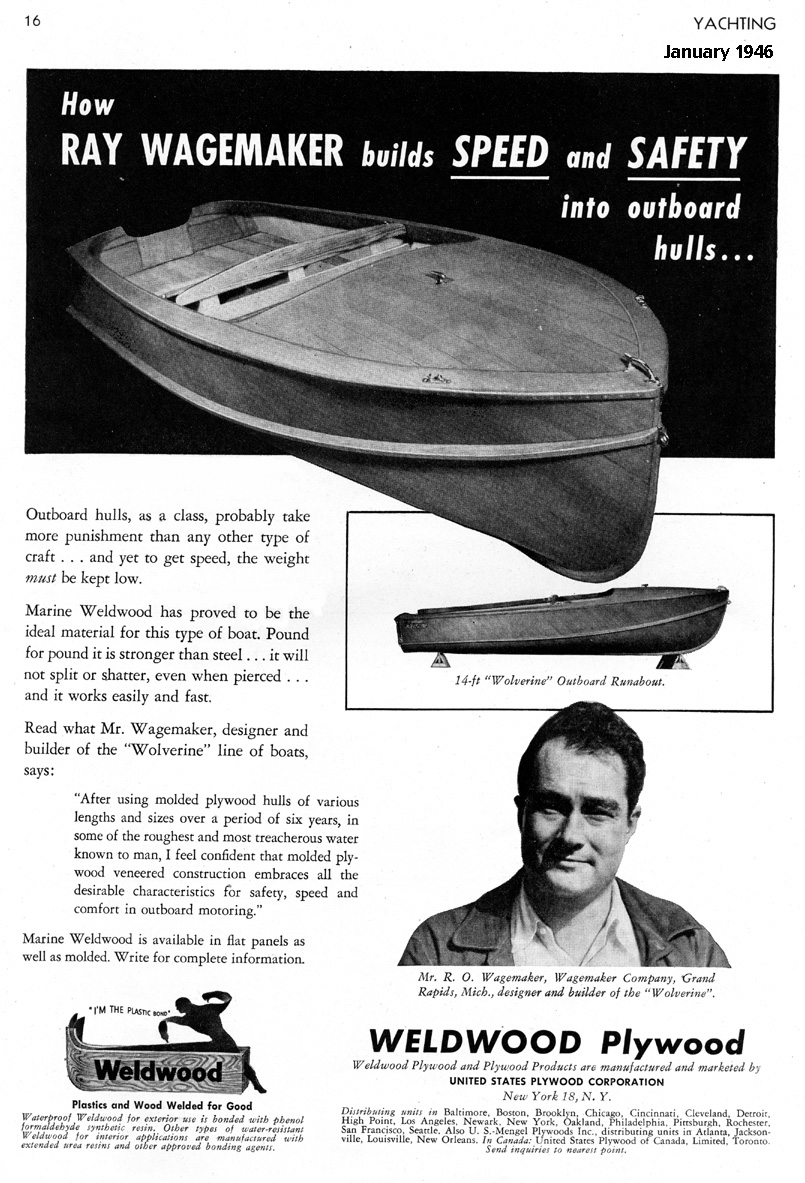
This is a 1946 Wagemaker boat ad by Garry Spencer below

This is a 1952 Wagemaker boat ad by Garry Spencer below
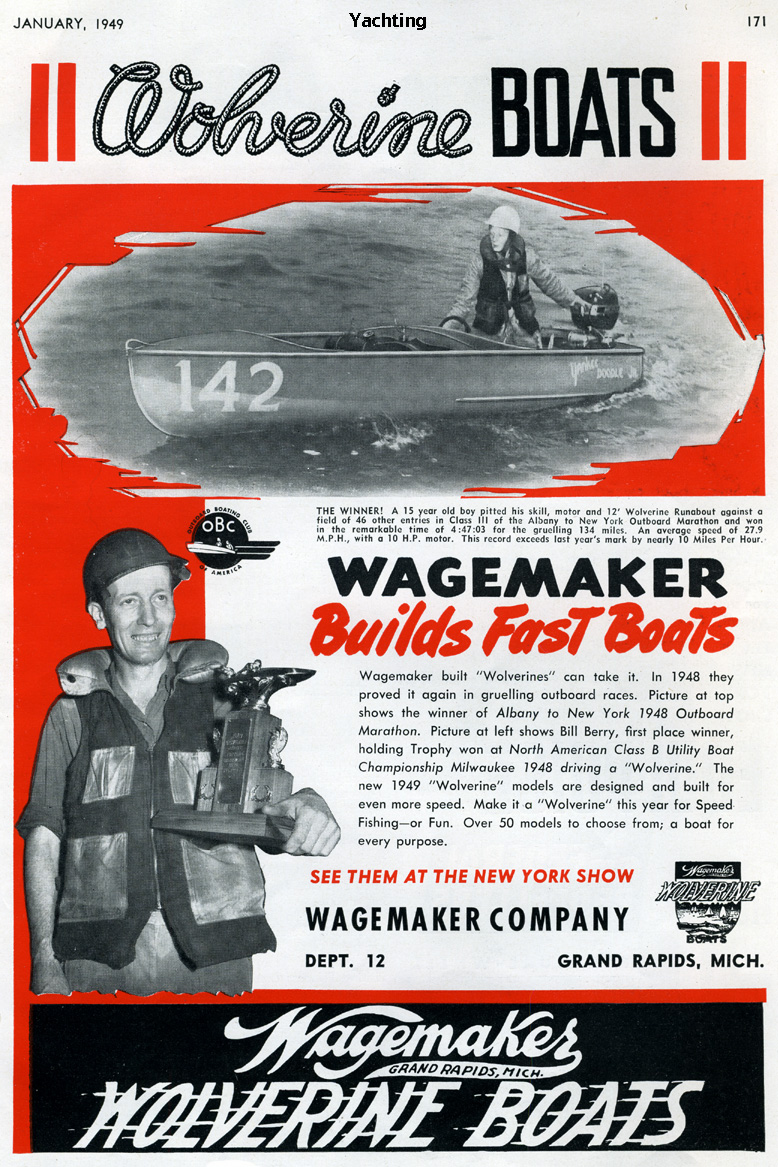
This is a 1949 Wagemaker boat ad by Garry Spencer below
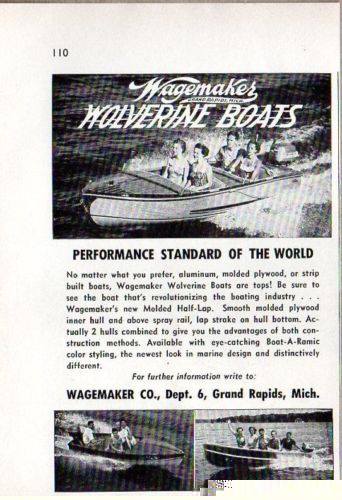
This is a 1955 Wagemaker Boat ad by Wagemaker Boat Company by Brian Fogary
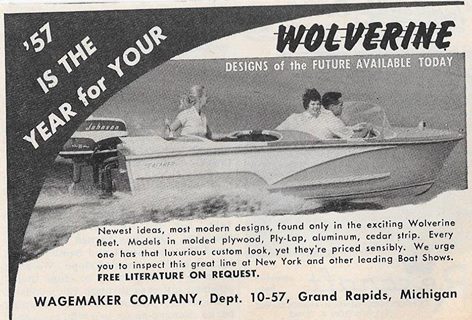
This is a 1957 Wagemaker Boat ad by Wagemaker Company by Brian Fogarty below
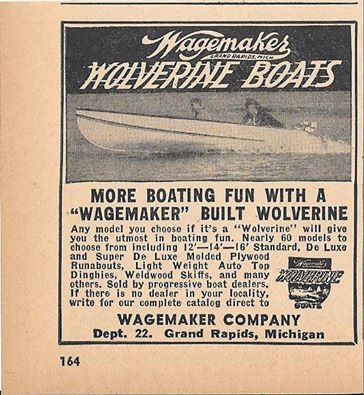
This is a 1947 Wagemaker boats ad by Wagemaker Company by Brian Fogarty below